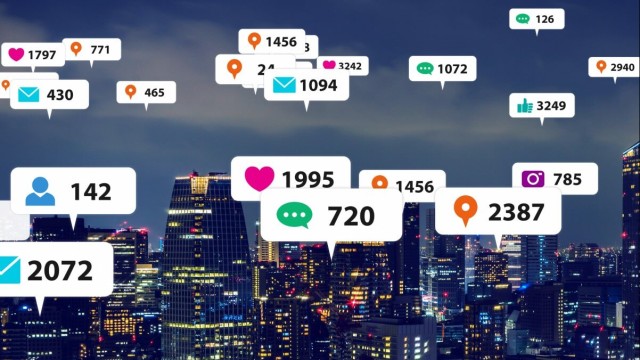
5 Ways to Boost Your Business through Influencer Marketing
Demand for influencer marketing has grown rapidly in recent years, with Business Insider estimating that brands were set to spend up to US$15 billion on the strategy by 2022. Patricia Lui, Senior Lecturer of Marketing at the SMU Lee Kong Chian School of Business, shares some tips on how to tap on influencers to give your business a boost, and not bring it down.
In 2019, Merriam-Webster added the word “influencer” to its dictionary, formally confirming that what had once been an emerging trend has since gone mainstream.
The influencer as we understand the word today is a creature of the 2000s, which saw the birth of the first social media platforms. “Specifically”, as Merriam Webster puts it, an influencer is “a person who is able to generate interest in something (such as a consumer product) by posting about it on social media”.
“Facebook, Twitter, Instagram, YouTube, and TikTok are now so popular that ordinary people can get themselves as famous as celebrities. They can endorse brands and promote products in the same ways celebrities used to do in the past,” says Patricia Lui, a Senior Lecturer of Marketing at SMU’s Lee Kong Chian School of Business.
Indeed, the demand for influencer marketing has grown so rapidly that as recently as December 2019, Business Insider estimated that brands were set to spend up to US$15 billion on it by 2022, which would be almost double the US$8 billion spent in 2019.

Covid-19 has arrested this momentum somewhat. And even before the pandemic’s economic impact put pressure on marketing budgets, influencer scandals—running the gamut from a lack of influencers’ transparency in disclosing their advertising deals to controversial behaviour in their personal lives—had already cast some doubt over the long-term viability of this marketing strategy. Worse, working with the wrong influencer could have a devastating effect on a brand’s reputation.
So, what is the future of influencer marketing? For starters, artificial intelligence (AI) is poised to play a key role for the sector in the years ahead, Lui predicts. “For example, Kobe, the leading influencer marketing agency in Singapore, uses AI technology to analyse influencers’ profiles. It wants to understand its team of over 5,000 influencers better, to ensure that the right influencer is hired to spread the right message to the right target audience.”
However, technology-driven precision must also be accompanied by pin-sharp clarity from brands about what they want to achieve when they tap on influencer marketing. Here are some tips from Patricia on how to tap on influencers to give your business a boost, and not bring it down:

“Facebook, Twitter, Instagram, YouTube, and TikTok are now so popular that ordinary people can get themselves as famous as celebrities. They can endorse brands and promote products in the same ways celebrities used to do in the past."
Patricia Lui
Senior Lecturer of Marketing, SMU Lee Kong Chian School of Business
1. Always see the big picture
Influencer marketing is part of an overall marketing strategy. So companies should start with a business analysis of their products, competition, brand position, the buying behaviour of its target customers, and its current marketing strategy. This analysis helps brands to understand and define their needs and goals, and how influencer marketing can work with other forms of marketing to achieve these needs and goals.
2. Select your influencer carefully
Start by identifying the type of influencer that you want to work with. There are three broad types: mega-influencers (such as movie stars), macro-influencers (who have between 100,000 to 1 million followers), and micro-influencers (who have between 1,000 to 100,000 followers). Each category comes with its own risks and rewards. For instance, micro-influencers have less reach, but do have more time to engage their followers, and often are known as experts on niche topics.
Next, study your chosen influencer’s persona, past work, and social media metrics. Know their follower history, which is the actual number of followers over a period of time. Check the number of people the influencer is following—that tells you if the influencer is trying to gain followers by following others. If he or she has followed many, or even more people than his or her own followers, then something might be wrong.
Engagement is another key indicator, as it shows the quantity and quality of interaction between the influencer and his or her followers. This check will tell you if an influencer has an inactive follower base. The nature of follower responses is also illuminating: if the influencer has a high proportion of negative comments, that’s a red flag.
3. Establish clear goals and tracking metrics
In general, influencer marketing campaign goals include brand awareness, engagement rate, and conversion. Establishing tracking metrics related to these goals help to measure return on investment with regards to influencer marketing.
Brand awareness relates to how target customers recognise a brand. Engagement rate refers to the level of interaction the influencer receives on his or her content. For these categories, brands can measure metrics such as impressions, likes, comments, and shares.
Conversion is about a specific action that a person takes in response to the influencer’s message. These could include a call-to-action to subscribe to a newsletter, download an app, or buy a product. For this category, the relevant metrics to track could be number of signups, downloads, or purchases.
4. Go for collaboration, not control
Having clearly established marketing goals also helps to set a direction for the influencer when it comes to creating content.
In this area, brands need to tap on the strengths of the influencer. The best influencers are popular because they are creative. So brands should let the influencer take the wheel and work with them closely to develop a campaign. It can be hard for brands to give up control on creative work and execution, but sometimes this is necessary as the influencer knows his or her followers best. After all, that is the very reason for collaborating with them.
5. Plan for contingencies
The biggest risk when it comes to influencer marketing is that any unethical behaviour on the part of the influencer can tarnish the brand image, resulting in consumers’ mistrust in the brand.
While companies cannot predict if an influencer will get caught up in personal scandals, they can put in place a plan for protecting the brand from damage should such scandals occur. Another tactic: stay updated on the influencer’s developments, and keep the channels of communication open and active. This helps brands to keep tabs on potential problems, and also monitor the efficacy of the influencer’s brand message delivery.




